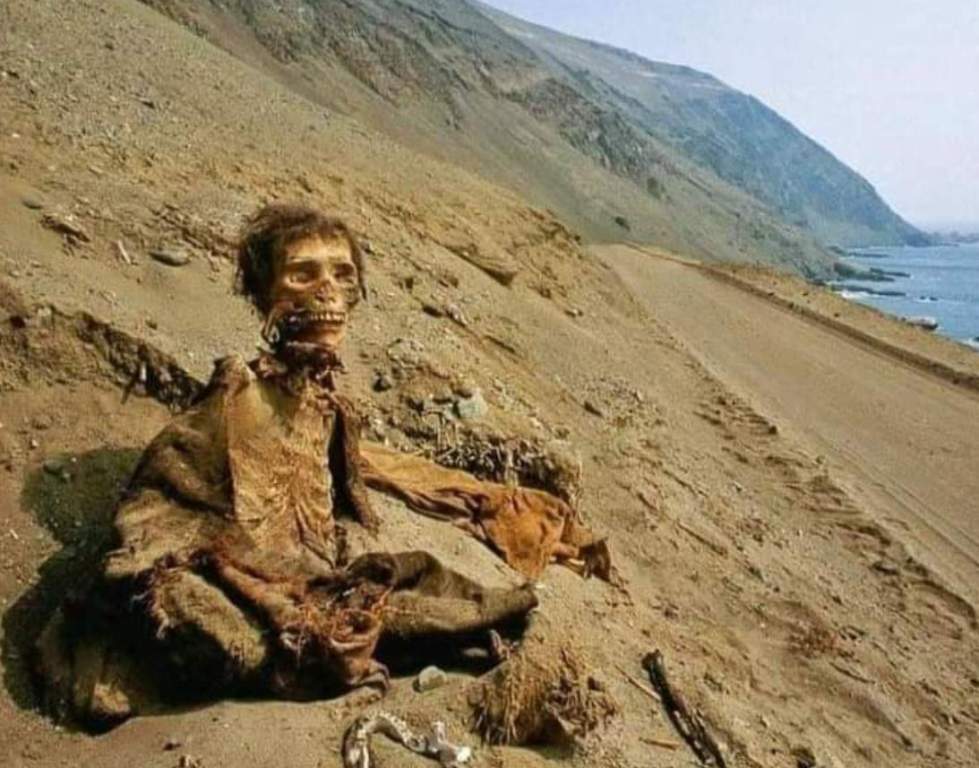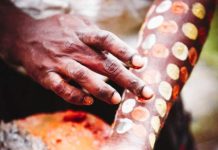The Chinchorro Mummification Culture: A long-buried corpse (about 5020 BC), preserved in the Atacama Desert of Chile, one of the driest places on Earth, with centuries-old skin, hair, and clothes still on it. About 7000 years ago, the Chinchorro people began mummifying the corpses of beloved lives in the vicinity of Caleta Camarones. Predating the Egyptian mummies by up to two millennia, they are the most ancient instances of intentionally mummified human remains. This is a small fishing community 62 miles south of Arica, a splash of green in the otherwise monochromatic Atacama desert.
The arid climate of the Atacama Desert has contributed to the thousands of years of preservation of the Chinchorro mummies; but, in the last ten years, several of them have swiftly degraded, with their skin turning into a black slime. The village, which is squeezed into a valley where the Camarones River empties into the Pacific Ocean, is home to Chinchorro gravesites, empanada eateries, and a wide crescent of golden sand. The oldest naturally mummified body found in the Atacama Desert dates to approximately 7020 BCE.
Travelers can see the most striking display of local culture along a 20-mile road that enters Camarones Valley: six imposing modern statues of Chinchorro, some of which are as tall as 16 feet. Their purpose is to aid in the visualization of the invisible mummies that remain buried underneath the brown dirt. Around 5050 BC, the Chinchorro people in this area invented the first mummification procedures. Residents of Atacama effectively skinned the dead, excising organs and muscles, and then reshaping the bodies with clay, reeds, and sticks. According to Arriaza, this was done to give the skeletons volume before seamstresses sewn them back together with either sea lion or human skin. UNESCO designated the artificial mummification process and the Chinchorro cultural communities in Arica and Parinacota as World Heritage Sites in 2021.
Max Uhle, a German archaeologist, discovered an odd assemblage of human remains in 1917 while studying the sunbaked coast of the driest desert on Earth. As he dug through the khaki-colored mud, he discovered bodies twisted with branches and reeds, their heads adorned with ornate wigs and striking red- and black-colored clay masks. Several corpses have post-mortem wounds, such as artificial legs or arms in place of real ones, a false head placed in place of another fake head, or a shattered head that has been adequately mended.
These ancient humans—known as Chinchorro mummies—were found in the Atacama Desert of Chile, not far from the city of Arica. The remains of twelve hunter-gatherers, who lived around the coasts of northern Chile and southern Peru between 7000 and 1500 BC, were discovered, documented, and then mostly lost to history for an additional fifty years. Bone chemistry and shell midden indicate that 90% of the population’s diet consisted of seafood.
Anthropologists speculate that unborn fetuses may have been accidentally poisoned and preserved due to naturally occurring arsenic in the Camarones River, which is 100 times higher than current safety standards. This may have led to Chinchorro’s custom of ceremoniously treating the dead bodies. Babies and fetuses make up the majority of the earliest mummies. They could assume the role of “masters of the dead,” bestowing on the dead a sense of immortality and allowing others to mourn them long after they had passed away, by transforming decaying bodies into beautiful artifacts.
Read More: “Sisters,” The Olive trees of Noah







